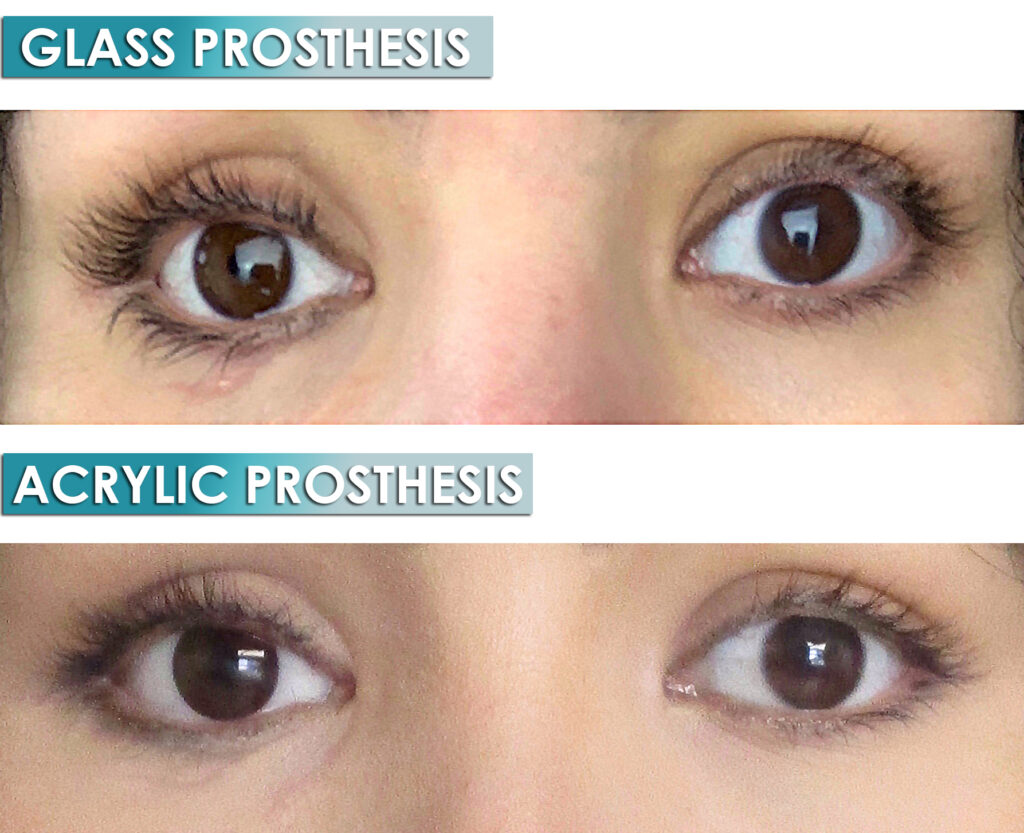Acrylic vs. Glass Eye Prosthetics

One of our patients came all the way from Germany and shared her experience transitioning from glass to acrylic eye. https://www.youtube.com/watch?v=jaAkR62dBsk
Acrylic Eyes
- Weight: Light. An Acrylic Eye won’t weigh down or stretch the muscle/area.
- How It’s Made: Impression Technology provides more Precision for Custom Eye Fit.
- How’s the Motion? PEG Integration provides improved movement from Thinner Edges.
- What is the Maintenance? Minimal. Prosthetic pieces can be worn full time!
- Lifespan: Are you ready for this? A whopping 5 Years or More.
- Can Eyes be Modified? Yes! Eyes can be Adjusted and/or Rebuilt over time.
- Are there Risks/Concerns? Not to worry. An Acrylic Eye does not run the risk of exploding or imploding. You also don’t have to worry about your eye getting stuck from below freezing temperatures.
- What is the Science behind this? Ocular Prosthetics implement Science Based Measurements for a Custom Model Build.
Glass Eyes
- Weight: 1/3 Heavier causing Lower Lid Laxity.
- How It’s Made: Glass is Blown through Empiric Guess Work.
- How’s the Motion? Limited Movement from a Larger Glass Volume.
- What is the Maintenance? Routine. These must be removed each night. Not to mention, an annual exchange for a new eye.
- Lifespan: Durability of 1 Year as Eye Secretions etch the glass making it rough and abrasive.
- Can Eyes be Modified? Unfortunately, No. There is no way to modify or rebuild a Glass Eye. A Brand New Eye must be remade each year.
- Are there Risks/Concerns? Glass can implode from pressure change or become an uncomfortable wear during extreme weather conditions.
- What is the Science behind this? Glass Eyes are more Artisan and a Trade, than Science.

